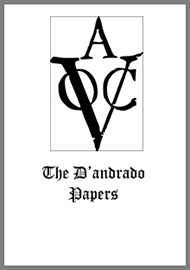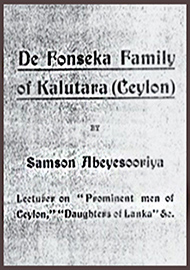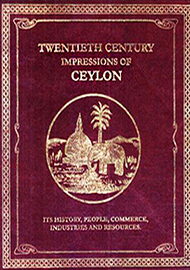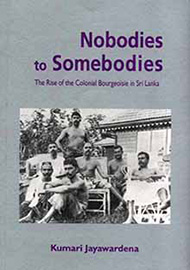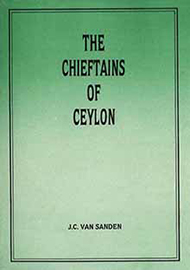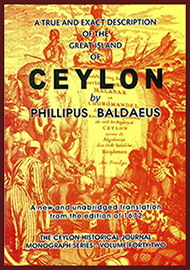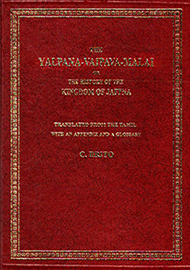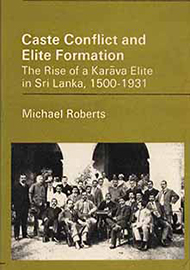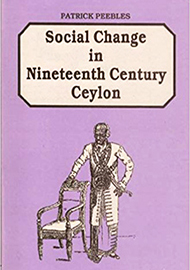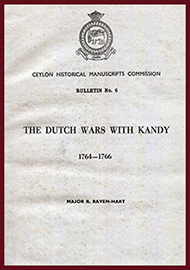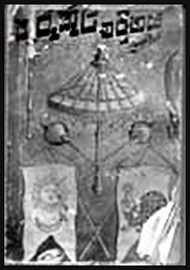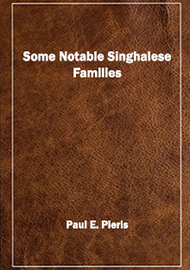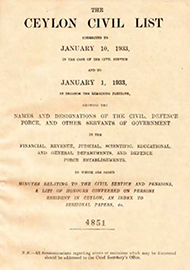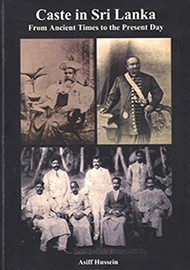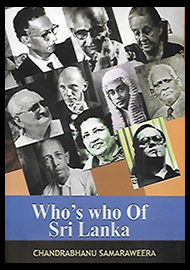This page contains the documentary references made to the De Fonseka and associated families in records, books and other publications, and reproduces for the very first time portions of the Dutch Records maintained at the National Archives of Sri Lanka. These have been the main references for this web site and will be useful for anyone researching their own own family roots.
Marking another first this website is proud to present to you extracts from original Dutch Records. This is the first time that some of the Dutch records, now preserved in the National Archives of Sri Lanka, has been brought online. As the records are in the early Dutch language, they have been included parallel with its English translation collectively known as the D’andrado Manuscripts. Links from the different documents in this collection will take you to the images containing the original Dutch work. This arrangement makes it possible for the reader to understand the contents and the structure of each document, and then study the images of the original Dutch manuscripts.
The De Andrado papers (volume No. 3210, Dutch records) is an interesting collection of legal and administrative documents of the 17th and early 18th centuries, which illustrate the various stages of a long conflict between the Judiciary and the Executive. They consist of deeds and certificates affecting land, dating back to the early years of Dutch rule – petitions and declarations submitted to Court, extracts from the Judgment Roll, copies of writs and summonses, counter petitions, minutes by the Governor and reports from executive and judicial officers. These various papers were collected into a single file and deposited in the Secretariat for ease of reference by contemporary litigants. The case involved Bras De Andrado, and hence left a paper trail of the De Andrado and De Fonseka families.
M. D. Raghavan, Emeritus Ethnologist, National Museums of Ceylon, K. V. G. de Silva 1961
This book provides the main background to this website as it revolves around the genealogy information found in this book. The Karava early history and the recent histories given in the Karava page is also based on the material found in this book.
Michael Roberts in his book ‘Caste Conflict and Elite Formation’ states that this book was sponsored by a number of Karava rich. S. R. de Fonseka was one such Karava who helped Raghavan with material for the research work to produce the book. This was published by another Karava, K. V. G. de Silva.
While other books relate to a specific colonial period, this book traces the very origins of the Sri Lankan Karava from the time of the ‘Mahabharata’ to the British Periods. It also lists important reference material relating to the De Fonseka and D’Andrado families.
Samson Abeyesooriya, Independent Press.
This rare booklet was in the possession of Michael Roberts, historian and author who has done much research on the Social History of Ceylon. His book ‘Caste Conflict and Elite Formation’ is featured elsewhere in this page. The Author now domiciled in Australia handed over his copy to Dr. Srilal Fernando, a fellow Genealogist, who has kindly lent a copy to this website. My thanks to both Michael Roberts and Dr. Srilal Fernando.
From the contents of the booklet, it can be approximately dated to the early 1940’s. It can also be assumed that Mr. Samson Abeyesooriya wrote a series of books on prominent Ceylonese families of that time, and that this booklet was part of this series. The booklet is reproduced in its original form, unedited and in it’s entirety.
Arnold Wright, 1907, Lloyd’s Greater Britain Publishing Co.
A veritable Who’s Who of the early part of the Century and a much valued book, this is the only book to have pictorial references to our ancestors. The references to De Fonseka families have been scanned and included. This book contains the cream of the society at that time. Michael Roberts analyzed the cast composition of the people listed in this book, and concluded that the 35.8% identified as Karava, is far in excess of the representation in the islands population. First edition copies of this book sells major amounts. It is also said that a payment had to be made to be included in this book. Has pictorial References to S. R De Fonseka, E. C De Fonseka and many other De Fonsekas.
The Rise of the Colonial Bourgeoisie in Sri Lanka, Kumari Jayawardena,
Social Scientists’ Association and Sanjiva Books, 2000, ISBN 955-9102-26-5.
Gives a detail account of the rise of the Karava during the sweeping economic changes of the 19th and the early part of the 20th century, and traces the rise of a Karava elite through their involvement in the liquor industry, rents and plantations. The Karava history relating to this period given in the Karava page elsewhere is based on the material in this book and that of Michael Roberts. Contains references to E. C. de Fonseka and the De Fonseka families in general.
J. C. Van Sanden, Vice-Counsel for the Republic of Poland (Ceylon), first published 1936. Reprint 1994 ISBN 81-7013-124-3
This book records the names and careers of the Chieftains of Ceylon who held office under the Dutch and British governments. The system of governing their possessions through Mudaliyars was adapted by the Dutch, from a scheme of administration which originated before the Portuguese times, and continued through to the later parts of the British rule.
Contains references to Manuel De Fonseka, Johannes De Fonseka, S. R. De Fonseka and many others, including a reference to one Don Pedro as Manuel D’Andrado’s father. Foreword by Sir Solomon Dias Bandaranaike.
Rev Philip Baldaeus. Printed at Amsterdam, 1672. This edition first published in London, 1732. Translated from the high-Dutch.
Contains the earliest known references to a de Fonseka, that of Michael De Fonseka. Baldaeus was the Dutch Chaplain in Ceylon 1656-1665, and accompanied Van Goens expedition to Jaffna in 1658, and seems to know Don Manuel D’Andrado and Don Michael De Fonseka personally. This book describes in detail the capture of Jaffna by the Dutch and local militia, which included Manuel D’Andrado and Michael De Fonseka. It also has a graphic account of the subsequent Coup in the Jaffna Fort, and the hanging of the perpetrators. This event is the background to the ‘Poothathampi’ episode involving Manuel D’Anderado, and the beautiful wife of Mudaliyar Poothathampi of Jaffna.
C. Britto. History of the Kingdom of Jaffna. 1879 Colombo Reprint 1999 ISBN 81-206-1362-7.
Translated from the Tamil prose by C. Brito of manuscripts written somewhere around 1736. Includes a detailed account of the ‘Poothathampi’ episode involving Don Manuel D’Andrado and the murder of a Tamil Mudaliyar. Don Manuel D’Andrado fell in love with his wife. This story is told in a subsequent Nadagam (play) that was made in Jaffna, and is one of the oldest Tamil plays performed in the nadagam style. This episode was hotly debated even as late as the 1940s and included within these pages are some pamphlets and newspaper clippings from 1941.
John. H. Martyn. American Ceylon Mission Press, Tellippalai, Ceylon 1923
This book chronologically lists the events connected with Jaffna from 1505 onwards. It also lists details of some of the prominent families of Jaffna at that time. The entire appendix of this book is dedicated to an in depth analysis of the ‘Poothathampi’ episode involving Don Manuel D’Andrado and the Tamil Mudaliyar Poothathamby. This also lists all the references made to this episode in historical documents. It dissects, analyses and lays to rest all arguments made by the various writers.
Michael Roberts, 1982, Cambridge, Cambridge University Press. ISBN 81-7013-139-1
This detailed study by Roberts document the ‘Rise of the Karavas’ and reconstructs the network of historical and social factors to explain it. Has many references to the De Fonseka families of Kalutara and to S. R. de Fonseka, E. C. de Fonseka. It lists E. C. de Fonseka as the second highest plantation owner in 1927, based on an analysis of the Ferguson’s Directory of the same year.
The Karava history relating to the period pre 1830 and post 1830 given in the ‘Karava’ page elsewhere, is based on the material in this book and that of Kumari Jayawardena.
Patrick Peebles. 1995, Navrang ISBN 81-7013-141-3.
This book by Peebles examines the social and economic changes spanning the nineteenth century with special emphasis on the Singhalese Elite (the Mudaliar class) and how caste, kinship, service tenures and land control interacted with their duties as colonial administrators.
Contains references to Reynaldus D’Andrado, Cornelis and Johannes de Fonseka, Carolis de Fonseka, S. R. de Fonseka and Manuel de Fonseka.
Major R. Raven-Hart
This extremely rare book, Bulletin No 6 in the Ceylon Historical Manuscript Commission series, deals with the Dutch wars which took place with the rulers of Kandy. The book describes the events that took place in about 15 pages of narrative detail, and includes a collection of letters, minutes, and extracts of correspondence from the Hague Archives and other sources. This book contains a detail analysis of the campaigns, troop movements etc and contains references to Francisco Lowe, Simon de Melho of the Tamel family and Gerrit Tissera.
A. S. F. Weerasuriya, 1961
Kurukula Charithaya is a Singhala book on the Karawa People. Translations of certain extracts taken from this great book on the Kurukula or the Karava people of Ceylon, sheds light to the caste overall.
Sir Paul E. Pieris
In a series of books written about Notable Singhalese Families of the 18th Century, Sir Paul E. Pieris makes references to some family members.
This series of publications provide valuable information on the ancestors who worked on the Ceylon Civil Service. These extracts have been compiled from the bound volumes found at the Sri Lanka Archives.
The Ceylon Government Gazette was the official news organ of the Government which published all official announcements, news, government ruling and laws. These extracts have been compiled from the bound volumes found at the Sri Lanka Archives.
From Ancient Times to the Present Day, Asiff Hussein, 2013, Neptune Publications (Pvt) Ltd.
This book covers the caste system as it existed among the different communities of Sri Lanka to the present, and devotes a chapter to the Karava. This has been summarized and presented to give the reader a good understanding of how the family may have originated, and their path over colonial occupations and rapid economic growth.
While this book does not refer any De Fonseka family member, it is a good resource for anyone researching family members. Amongst the names covered are Lionel Wendt, the De Soyza families, the Perera Abeywardena families of Galle, Ray Wijewardena, Devar Surya Sena, R. L. Spittle, Sri Chandrasekera, George E De Silva, Montegue Jayawickrama and many others.
